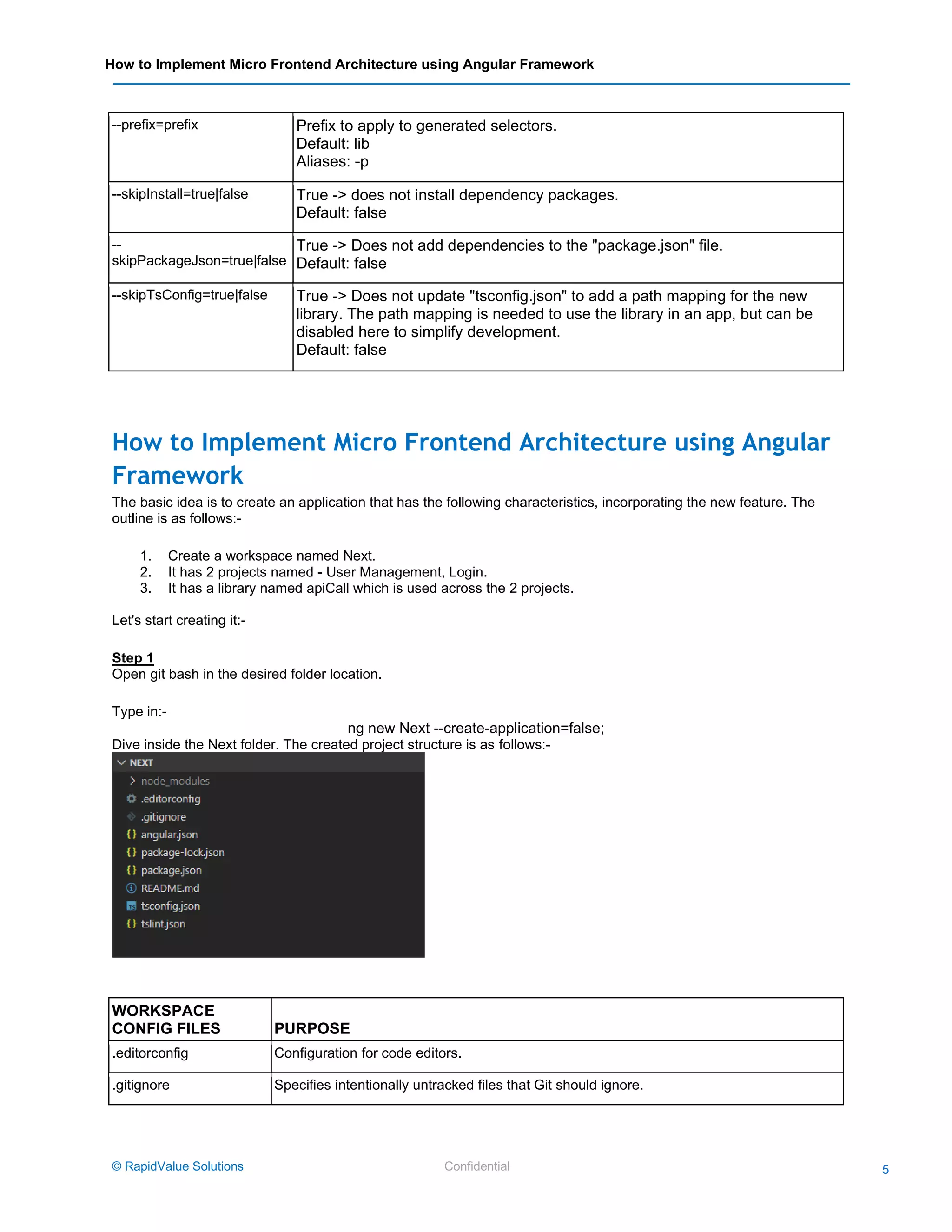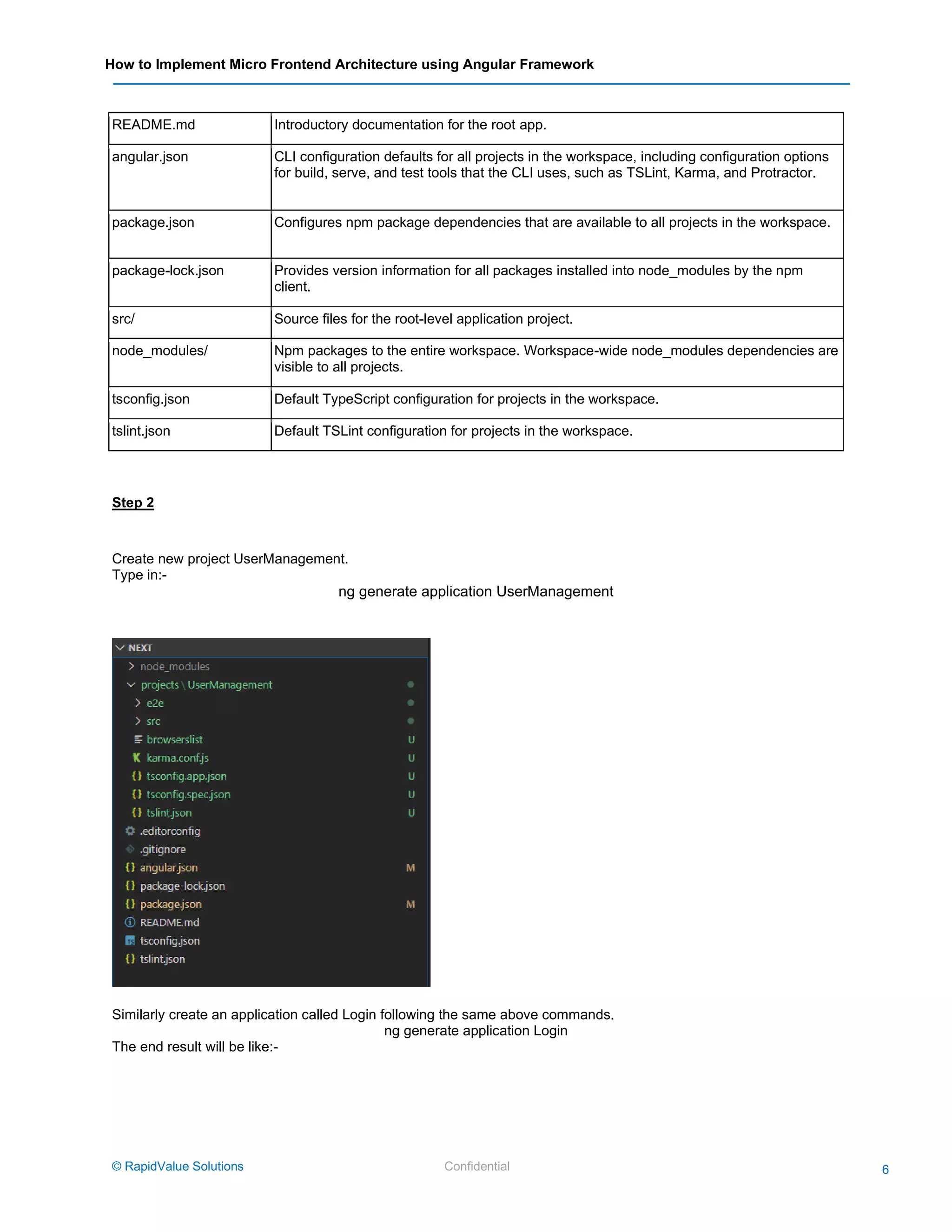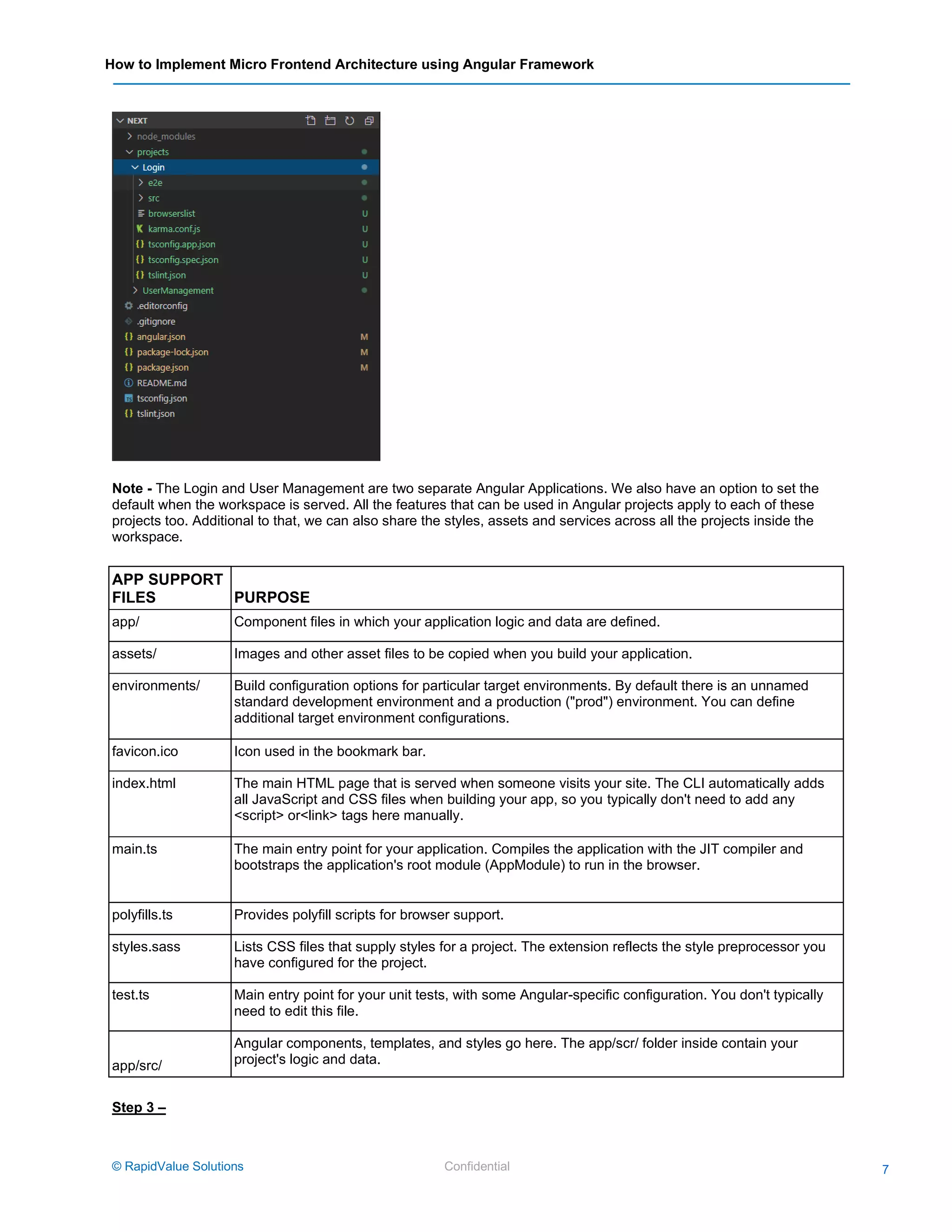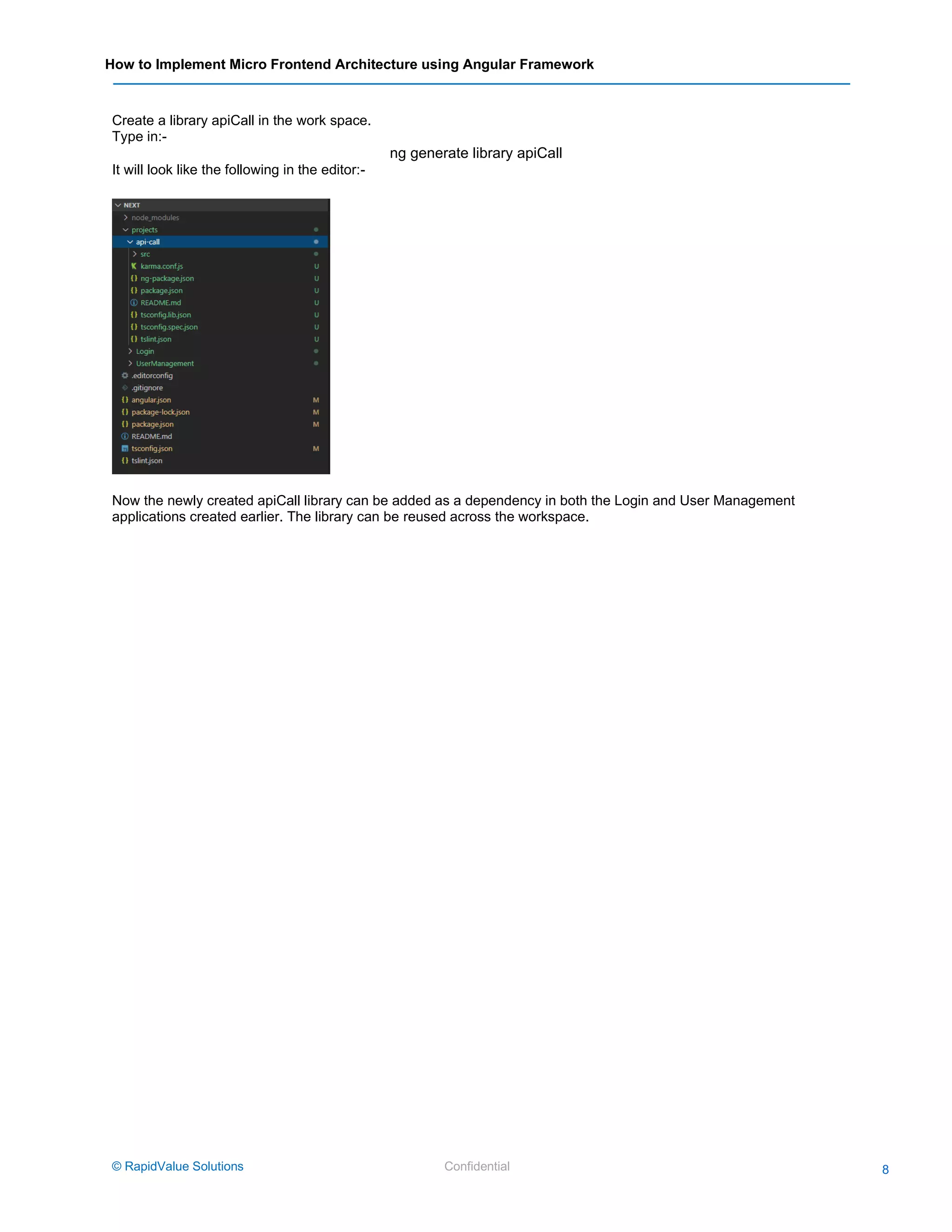The document outlines the implementation of micro frontend architecture using the Angular framework, introduced with Angular's 7.0.0 version. It details essential Angular CLI commands for creating applications, components, and libraries, and provides a step-by-step guide for setting up a workspace with multiple projects and shared libraries. RapidValue Solutions is identified as the provider of this information, emphasizing their expertise in digital product engineering.

![How to Implement Micro Frontend Architecture using Angular Framework © RapidValue Solutions Confidential 2 Micro Frontend Architecture in Angular The Angular team introduced the concept of workspaces in their 7.0.0 version which was released in Oct, 2018. With this update, Angular gave developers a new --create-application flag feature during creation of the application. By default the --create-application flag will be false. Example:- ng new <workspaceName> --create-application=<true/false> With this addition, the developers now have the option to easily create an application, library or workspace. The following is the Angular CLI command to generate/modify the files based on schematics:- ng generate <schematic> [options] This schematic can take one of the following values: • appShell • application • class • component • directive • enum • guard • interceptor • interface • library • module • pipe • service • serviceWorker • webWorker Workspace Setup-Basic Angular CLI Commands How to Implement Micro Frontend Architecture using Angular Framework We will be looking into the basic commands used for generating:- 1. Application ng generate application <name> [options] ng g application <name> [options] OPTION DESCRIPTION --inlineStyle=true|false True -> Includes styles inline in the root component.ts file. Only CSS styles can be included inline. False -> External styles file is created and referenced in the root component.ts file. Default: false Aliases: -s](https://image.slidesharecdn.com/microfrontendarchitecturerapidvalue-200601082107/75/How-to-Implement-Micro-Frontend-Architecture-using-Angular-Framework-2-2048.jpg)
![How to Implement Micro Frontend Architecture using Angular Framework © RapidValue Solutions Confidential 3 --inlineTemplate=true|false True -> Includes template inline in the root component.ts file. False ->External template file is created and referenced in the root component.ts file. Default: false Aliases: -t --lintFix=true|false True -> Applies lint fixes after generating the application. Default: false --minimal=true|false True -> Creates a bare-bones project without any testing frameworks. (Used for learning purposes only.) Default: false --prefix=prefix A prefix to apply to generated selectors. Default: app Aliases: -p --routing=true|false True -> Creates a routing NgModule. Default: false --skipInstall=true|false Skips installing dependency packages. Default: false --skipPackageJson=true|false True -> Does not add dependencies to the "package.json" file. Default: false --skipTests=true|false True -> Does not create "spec.ts" test files for the app. Default: false Aliases: -S --style= css|scss|sass|less|styl File extension/preprocessor to use for style files. Default: css --viewEncapsulation= Emulated|Native|None|ShadowDom View encapsulation strategy to use in the new app. 2. Component ng generate component <name> [options] ng g component <name> [options] OPTION DESCRIPTION --changeDetection=Default|OnPush Change detection strategy to use in the new component. Default: Default Aliases: -c --displayBlock=true|false Specifies if the style will contain :host { display: block; }. Default: false Aliases: -b --export=true|false True -> Declaring NgModule exports this component. Default: false --flat=true|false True -> Creates the new files at the top level of the current project. Default: false](https://image.slidesharecdn.com/microfrontendarchitecturerapidvalue-200601082107/75/How-to-Implement-Micro-Frontend-Architecture-using-Angular-Framework-3-2048.jpg)
![How to Implement Micro Frontend Architecture using Angular Framework © RapidValue Solutions Confidential 4 --inlineStyle=true|false True -> Includes styles inline in the root component.ts file. Only CSS styles can be included inline. False -> External styles file is created and referenced in the root component.ts file. Default: false Aliases: -s --inlineTemplate=true|false True -> Includes template inline in the root component.ts file. False ->External template file is created and referenced in the root component.ts file. Default: false Aliases: -t --lintFix=true|false True -> Applies lint fixes after generating the application. Default: false --module=module Declaring NgModule. Aliases: -m --prefix=prefix Prefix to apply to the generated component selector. Aliases: -p --project=project Name of the project. --selector=selector HTML selector to use for this component. --skipImport=true|false True -> Does not import this component into the owning NgModule. Default: false --skipSelector=true|false True -> Specifies if the component should have a selector. Default: false --skipTests=true|false True -> Does not create "spec.ts" test files for the new component. Default: false --style= css|scss|sass|less|styl File extension or preprocessor to use for style files. Default: css --type=type Adds a developer-defined type to the filename, in the format "name.type.ts". Default: Component --viewEncapsulation= Emulated|Native|None|ShadowDom View encapsulation strategy to use in the new component. Aliases: -v 3. Library ng generate library <name> [options] ng g library <name> [options] OPTION DESCRIPTION --entryFile=entryFile Path in which the library's public API file is created, relative to the workspace root. Default: public-api --lintFix=true|false True -> Applies lint fixes after generating the library. Default: false](https://image.slidesharecdn.com/microfrontendarchitecturerapidvalue-200601082107/75/How-to-Implement-Micro-Frontend-Architecture-using-Angular-Framework-4-2048.jpg)




